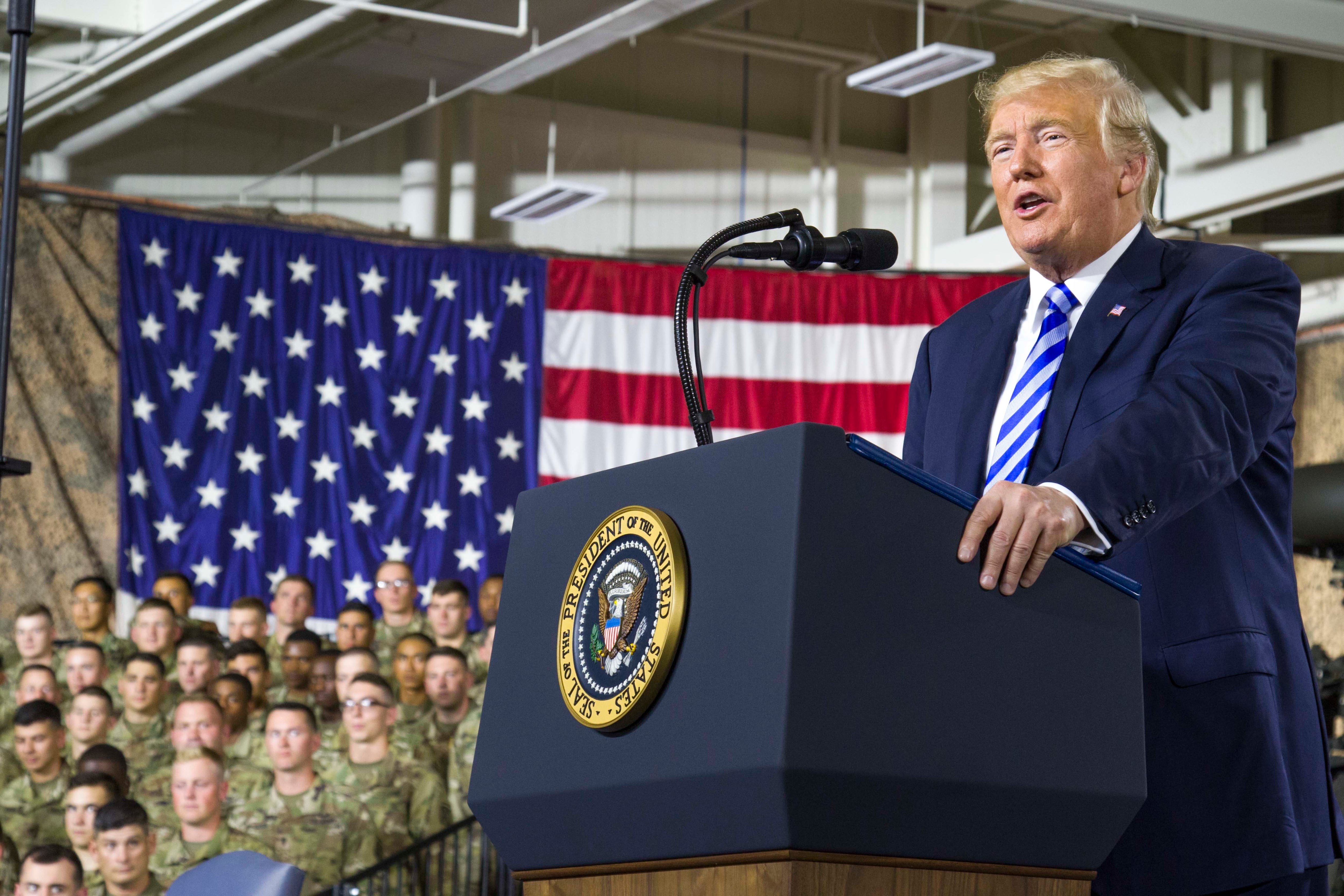The U.S. military’s senior enlisted leaders faced questions at the Pentagon Wednesday about how the enlisted force has adjusted to the hyper-partisan political climate of 2019.
While political division appears to increasingly be the norm in civilian life, enlisted service members have remained relatively insulated, according to Army Command Sgt. Maj. John Wayne Troxell, the top enlisted adviser to the chairman of the Joint Chiefs.
“One of the things that makes our military great is that we remain apolitical,” Troxell said in a nod to the long-standing rules that restrict political activity by personnel in uniform.
There is also a large demand on the armed forces right now across the globe, he noted. It includes the growing deterrence missions against Russia and China, as well as the existing operations to counter violent extremist groups in the Middle East and Africa.
Those have a unifying effect on the enlisted force, according to Troxell.
“The troops at the lower level are more focused on being prepared to go and do the mission that they signed up for," he said.
Still, more than 75 percent of service members responding to a 2018 Military Times poll of active-duty troops believe the military has become more politically polarized in recent years. The poll was done in collaboration with the Institute for Veterans and Military Families at Syracuse University.
The data highlights that the military isn’t necessarily immune to the partisanship infecting civilian life, but senior leaders still said Wednesday that the mentorship and culture offered by service counteracts those trends.
RELATED

“There are lots of people in this world, whether in politics or wherever, that may not emulate the things we want our service members to emulate, but there are tons of role models within our services,” Air Force Chief Master Sgt. Kaleth O. Wright said.
In the end, the military is a reflection of the society it draws recruits from, which is why instilling unifying values and beliefs is an integral part of the armed forces, according to Master Chief Petty Officer of the Navy Russell L. Smith.
“All of us [services] have different, but very similar, enculturation processes where we bring people in and expose them to our core values and let them know what the norms are," Smith said. "We spend a lot of time reinforcing character and leader development throughout the course of a career.”
The military has also had several high-profile brushes with white nationalists and extremists recently, including a Coast Guard officer accused of making a hit list targeting Supreme Court justices.
But the armed forces have been quick to separate extremist elements from the ranks when highlighted by the media, such as an ROTC cadet who was found to be making anti-Semitic and racist social media posts.
About 22 percent of troops who participated in the Military Times survey last fall said they have seen signs of white nationalism or racist ideology within the ranks.
Those numbers were roughly on par with a 2017 Military Times poll done following a clash between white supremacist groups and counter-protesters in Charlottesville, Virginia.
“I will tell you that in terms of some of these things that we will not tolerate, like racism and these organizations that support that, that’s not tolerated because of engaged leaders who are out there every day in their troops’ lives,” Troxell said.
During the panel Wednesday, Troxell was also asked why, out of all the enlisted leaders gathered from each service and the combatant commands, there were no women holding ranking positions.
“It is one of the things on my mind all the time,” Troxell said. “We focus on diversity, and if you look at the office of the senior enlisted adviser to the chairman now, I have racial diversity and I have gender diversity, but there’s one standard.”
Troxell said that there is nothing within the defense institutions and the halls of power at the Pentagon that keeps women from rising up to his role.
“There’s nothing professionally that prevents that,” he said. “I’m not going to speculate on why it hasn’t happened, but this is definitely something that’s on my mind all the time.”
Troxell recognized that there should be more female representation among the senior enlisted leaders, and said that is an effort he has actively pushed.
“I will go around to combat support agencies, three-star levels of commands that have female senior enlisted leaders and these guys do the same thing,” Troxell said, pointing to each service’s senior enlisted leader. “And we talk about ‘what are your goals, what do you hope to achieve, we want to help you.’”
The services won’t simply put a female senior enlisted leader in place just to have one, but they do want to address the question of why it isn’t happening more often, Troxell said.
“That’s something the services are getting after,” he added.
Kyle Rempfer was an editor and reporter who has covered combat operations, criminal cases, foreign military assistance and training accidents. Before entering journalism, Kyle served in U.S. Air Force Special Tactics and deployed in 2014 to Paktika Province, Afghanistan, and Baghdad, Iraq.




